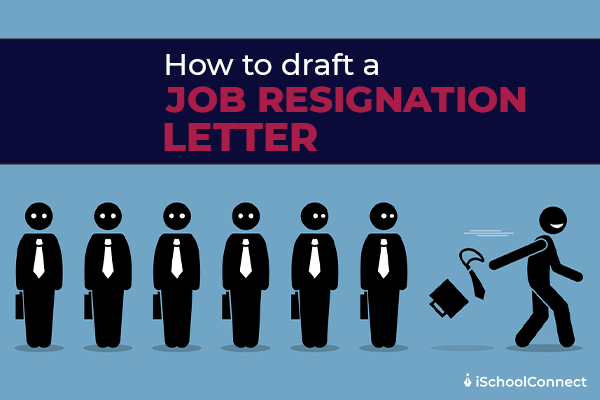Table of Contents
Writing a resignation letter can help you keep a cordial connection with your employer, regardless of why you’ve decided to quit. A professional resignation letter outlines your plan to depart and your gratitude towards your previous employer. In this blog, we will go through how to write a job resignation letter, what to include, and more.
What is a resignation letter?
A letter of resignation is a formal manner of announcing your desire to leave your current position. The paper documents your choice to quit the firm as well as your reasons for doing so. If you write a decent resignation letter, it may make the process of leaving go more smoothly. Naturally, the first step is to have a one-on-one talk with your manager to inform him or her that you intend to leave.
You can submit the resignation letter after the talk with your manager. It’s worth noting that, like your resume, it’ll almost certainly end up in your employee file, which is one of the reasons why it’s crucial to create a good impression.
Best tips for writing a resignation letter

Writing a resignation letter can be a challenging task for some people. That is why we have created a list of resignation letter best practices right here. Continue reading to learn more about the job resignation letter format and when and how to submit it.
When and how to write a job resignation letter?
You must observe certain resignation etiquettes while quitting your employment to leave things as smoothly as possible. One of these etiquettes is giving your organization plenty of time to prepare for your departure.
You should send your resignation letter two weeks before your departure. But this differs from location to organization. You want to check the place where you reside, and what are norms with regards to the notice period, NDA, contractual obligations, etc.
This will provide your team with adequate time to find someone to fill your shoes. It will also enable you to hand over your duties to a new employee or a coworker.
You can submit your resignation letter sooner, but no later than two weeks before your leave date. On the other hand, if your work contract stipulates how much notice you must give, you should strictly follow it.
Remember that your employer is under no obligation to accept your two-week notice. Be aware that some companies will want you to leave straight away.
How should you send your job resignation letter?
There are just two options for sending your resignation letter- in-person via a physical letter or an email.
Various variables will influence what is best suited for you. One is not superior to the other. If your company has a paperless culture, an email may be the best option.
Make sure you’ve spoken to your manager in person before sending your resignation letter, regardless of how you deliver it. It may be unpleasant at first, but it is the best course of action in the long term.
These are the steps to a polite job resignation letter.
- Discuss with your manager, supervisor, or boss.
- Send in your resignation letter.
- Help in whatever manner you can to ease the change.
What should your job resignation letter contain?

A resignation letter is similar to a cover letter or any other type of professional correspondence. It includes a title, three to four paragraphs detailing your resignation, and your signature are all included. A resignation letter is easier than a resume, which allows you to choose from a range of formats.
Title
Start your resignation letter by giving your name, work title, and any other pertinent details. This may seem superfluous, especially if you work in a small firm, but it is still necessary because it stays in your personnel file. Include details such as-
- Full name
- Current organization
- Current job title
- Address
- City, state, pin code
- Email address
- Date of resignation
First paragraph
Take time to consider your contributions to your organization. Tell your soon-to-be-former boss what you’ve learned, what you value most, and possibly who has had a particularly beneficial impact on your time there. It’s crucial to keep this paragraph as optimistic as possible since this will make the transition simpler.
You might want to include your future location of employment as well. There are situations where this is appropriate and others where it is not. If you’re switching a job to follow a passion or going back to school, it’s perfectly acceptable to inform your employer. You might not want to reveal this information if you are switching to a competitor.
Second paragraph
Following that, we urge you to provide your assistance in making the transfer as smooth as possible. Write something like ‘Of course, I am offering to assist as much as possible in the transition of my job tasks to my replacement. It will also help if mention to ‘I’ll also double-check that all of my reports are up to date and ready to go’’
Your former employer will be impressed if you can pull off being quite specific in this section.
Third paragraph
You can use the next paragraph to summarize your primary tasks and unfinished projects if it applies to you. This will be highly beneficial to your old company and will aid with the move. However, because this section is optional, you should only include it if it makes perfect sense.
Fourth paragraph
You can include your personal contact information, such as an email address or phone number, in the last paragraph before your signature. This is, however, entirely optional as you should only include them if you intend to keep in touch with your boss or consider using him as a reference. You’ll be the best judge of whether it’s a good addition.
Signature
Finally, add your signature. If you’re submitting it on paper, sign it by hand and include your typed name. If you’re sending it by email, signing with your typed name should suffice.
Key Takeaways
- A resignation letter is a written announcement of a person’s desire to leave the job they are currently employed at.
- When you decide to quit your work, writing a job resignation letter serves two purposes- it establishes an official record of notice and demonstrates professionalism.
- A resignation letter may be used to provide details about your last day on the job, aid with the transition, and express thanks to your employer for the opportunity to work for them.
We hope you enjoyed reading this blog. In case of any doubts, reach out to us or drop a comment below!
Liked this blog? Read next: How to write a relieving letter | Format and writing tips
FAQs
Q1. What if you don’t give your boss two weeks’ notice?
Answer – If you fail to give two weeks’ notice, you may violate your contract’s terms, which might lead to legal action. If you have no other choice, informing your boss and giving as much notice as possible (or even working out a new arrangement) may be an option to reduce the impact.
Q2. Is it necessary to state the reason for quitting in the resignation letter if it is a personal issue?
Answer – You are not required to furnish your employer with specific information. You might simply indicate that you are leaving for personal or family reasons. It is also not necessary to explain your reason for leaving. However, if you wish, you can offer a rationale in some circumstances.
Q3. Can I resign immediately without a formal resignation letter?
Answer – Except for contractual employees, most employment arrangements are at the parties’ discretion. This implies there is no legal agreement requiring you to give notice before quitting your work or prohibiting your employer from firing you at any time.






